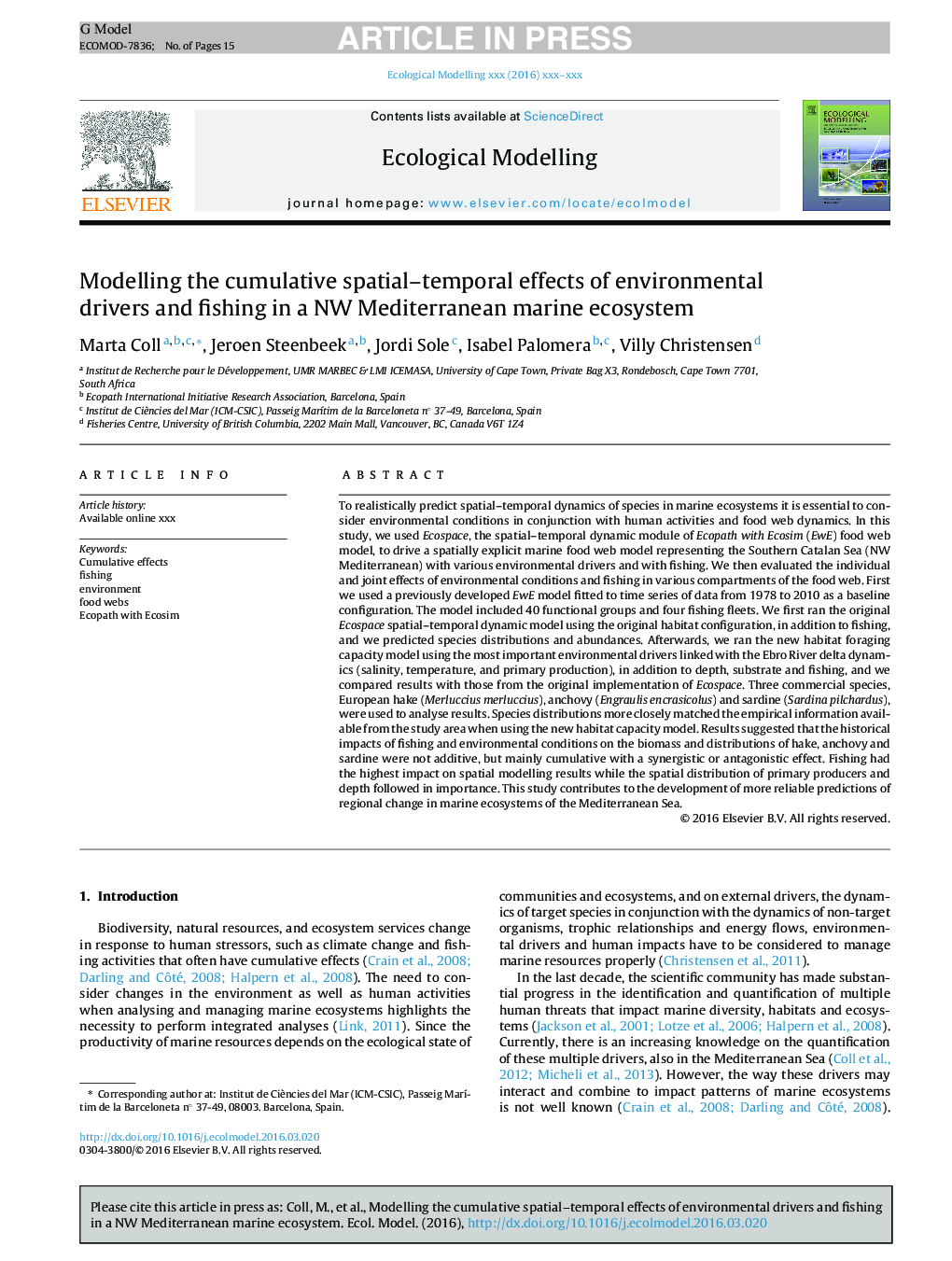| کد مقاله | کد نشریه | سال انتشار | مقاله انگلیسی | نسخه تمام متن |
|---|---|---|---|---|
| 6296142 | 1617416 | 2016 | 15 صفحه PDF | دانلود رایگان |
عنوان انگلیسی مقاله ISI
Modelling the cumulative spatial-temporal effects of environmental drivers and fishing in a NW Mediterranean marine ecosystem
ترجمه فارسی عنوان
مدل سازی اثرات فضایی و زمانی محرک رانندگان محیط زیست و ماهیگیری در اکوسیستم دریایی دریای مدیترانه
دانلود مقاله + سفارش ترجمه
دانلود مقاله ISI انگلیسی
رایگان برای ایرانیان
کلمات کلیدی
موضوعات مرتبط
علوم زیستی و بیوفناوری
علوم کشاورزی و بیولوژیک
بوم شناسی، تکامل، رفتار و سامانه شناسی
چکیده انگلیسی
To realistically predict spatial-temporal dynamics of species in marine ecosystems it is essential to consider environmental conditions in conjunction with human activities and food web dynamics. In this study, we used Ecospace, the spatial-temporal dynamic module of Ecopath with Ecosim (EwE) food web model, to drive a spatially explicit marine food web model representing the Southern Catalan Sea (NW Mediterranean) with various environmental drivers and with fishing. We then evaluated the individual and joint effects of environmental conditions and fishing in various compartments of the food web. First we used a previously developed EwE model fitted to time series of data from 1978 to 2010 as a baseline configuration. The model included 40 functional groups and four fishing fleets. We first ran the original Ecospace spatial-temporal dynamic model using the original habitat configuration, in addition to fishing, and we predicted species distributions and abundances. Afterwards, we ran the new habitat foraging capacity model using the most important environmental drivers linked with the Ebro River delta dynamics (salinity, temperature, and primary production), in addition to depth, substrate and fishing, and we compared results with those from the original implementation of Ecospace. Three commercial species, European hake (Merluccius merluccius), anchovy (Engraulis encrasicolus) and sardine (Sardina pilchardus), were used to analyse results. Species distributions more closely matched the empirical information available from the study area when using the new habitat capacity model. Results suggested that the historical impacts of fishing and environmental conditions on the biomass and distributions of hake, anchovy and sardine were not additive, but mainly cumulative with a synergistic or antagonistic effect. Fishing had the highest impact on spatial modelling results while the spatial distribution of primary producers and depth followed in importance. This study contributes to the development of more reliable predictions of regional change in marine ecosystems of the Mediterranean Sea.
ناشر
Database: Elsevier - ScienceDirect (ساینس دایرکت)
Journal: Ecological Modelling - Volume 331, 10 July 2016, Pages 100-114
Journal: Ecological Modelling - Volume 331, 10 July 2016, Pages 100-114
نویسندگان
Marta Coll, Jeroen Steenbeek, Jordi Sole, Isabel Palomera, Villy Christensen,
